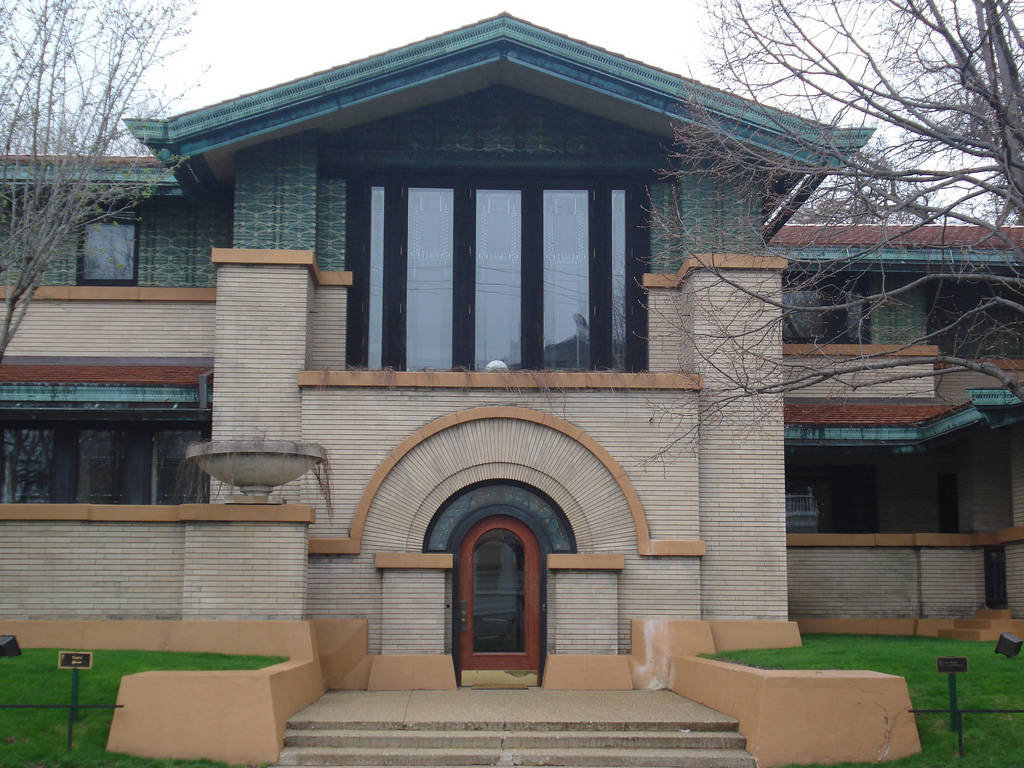#12018. Organic Prairie Style House Facade: Harmony of Horizontals and Geometry

Before us stands a striking example of Prairie School architecture, developed by Frank Lloyd Wright in the early 20th century. The building showcases characteristic features of this style: horizontal lines emphasized by wide cornices with projecting roof overhangs covered in patinated copper; focus on geometric shapes and symmetry.
The facade is constructed of light-colored brick with horizontal coursing, which enhances the sense of connection to the earth and natural landscape. Particular attention is drawn to the central entrance with its semi-circular arch, designed as a series of concentric arcs in different colors, creating a sunburst effect. This detail not only serves as a decorative element but also functions as the visual center of the composition.
The upper floor is adorned with vertical window openings featuring Wright's characteristic art glass, creating an interesting contrast with the horizontal lines of the facade. Terraces and projecting elements of the building form a complex volumetric composition, typical of organic architecture. The color palette of the facade is built on a combination of warm sandy tones of brick with the cool blue-green color of metal elements.
When designing your own house, you might draw inspiration from some techniques used in this specimen: the use of horizontal lines to visually expand the space, combining different materials (brick, wood, metal) to create textural variety, and using arched elements as accent details. Special attention should be paid to the harmonious integration of the building with the surrounding landscape, which is a fundamental principle of the Prairie style.